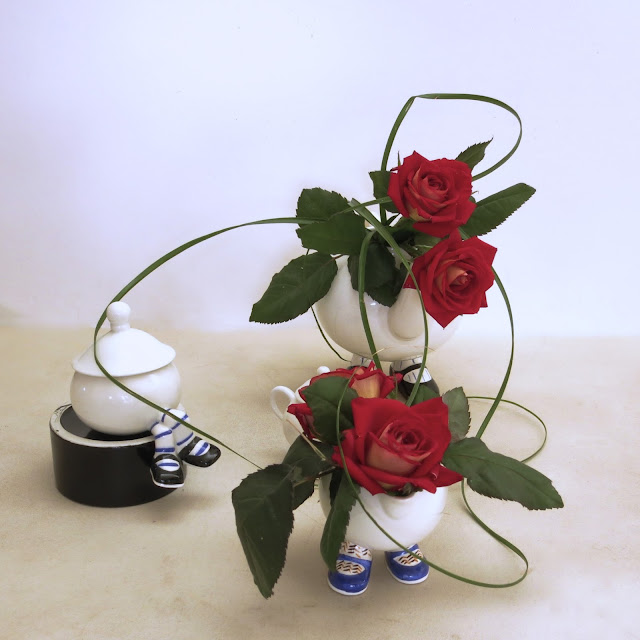Late Spring in Melbourne is when two of my favourite Australian flowering trees reveal their glory. The first being Brachychiton acerifolius * also known as the Illawarra Flame Tree.
I noticed this one in the Royal Melbourne Botanical Gardens last week. The second tree is Grevillia Robusta * , sometimes called the 'Silky Oak' because of its wood grain.
I took this photograph beside the Yarra River in Melbourne. We have both of these 'trees' in our garden, which have been struggling with poor soil and low rainfall for about 25 years, and we are waiting patiently (?) for the flowers still.
* * * * * * *
At Elizabeth's class this week our exercise was to make an ikebana arrangement in 'an everyday object'. This stretches the imagination and creativity a bit in terms of the object, which is to temporarily become a vase and then the choice of material that is going to be suitable.
My colleague Ruth used these very cute tea service objects with intense red roses and a fine green line.
Sandra used a stackable ceramic lunchbox, with red eucalyptus flowers and some long stemmed white flowers.
Maren used a lemon squeezer that she had bought on her honeymoon. Her materials are grape leaves and alstroemeria.
I used a stainless steel cutlery drainer that I have tilted to give a 'dynamic' feel and not have it simply look like a vase with holes in it. I struggled for some time before I found this way of using an 'egg ring' to tilt the drainer. The second ring provides a further sense of this being an object out of its usual context. The materials are agapanthus flowers and dietes leaves.
Greetings from Christopher
29th November 2015
* Click on the blue text for further information

















